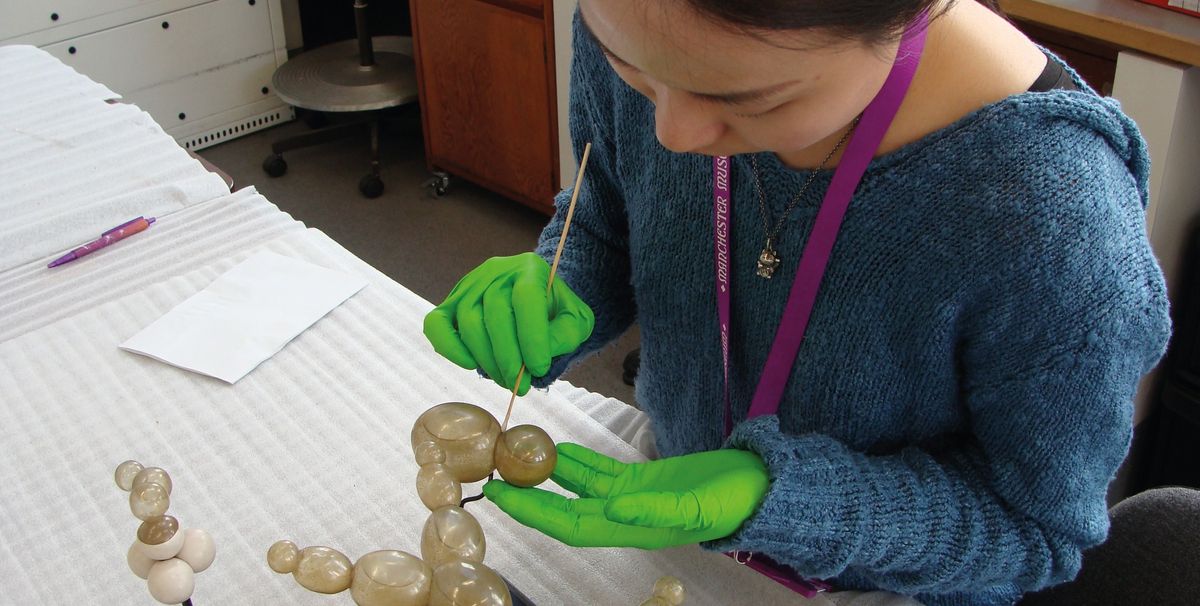Conservators from the Manchester Museum painstakingly removed a century of grime from around 25 objects used as life science teaching aids ahead of an exhibition opening this month that presents them as works of art. The treated pieces, many of which have never been on display before, are from the University of Manchester’s collection. They will be exhibited alongside pieces from Liverpool’s World Museum and those collected by George Loudon, a retired UK banker who amassed a sizable collection of contemporary art before turning his attention to 19th-century scientific models. The show marks the public debut of Loudon’s collection.
Solvents were used to pick dirt from the surface of a 19th-century yeast model made of gelatin and produced in Germany by Robert and Reinhold Brendel, a father and son team known for their botanical models made from everything from papier mâché to gelatin. A smoke sponge was used to remove soot from a work on paper from 1872 that shows a panorama of the Grand Canyon in the US. But for Sam Sporton, a senior curator at the museum, it was cleaning the intricate glass models made by Leopold and Rudolf Blaschka that proved to be the greatest revelation. “Now you can appreciate the skill involved in creating these incredible pieces,” she says.
• Object Lessons, Manchester Museum, 19 May-20 August


